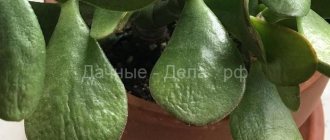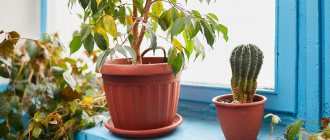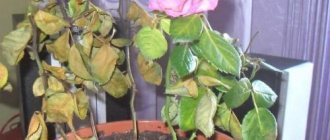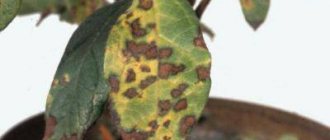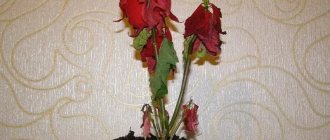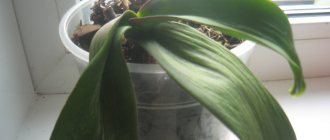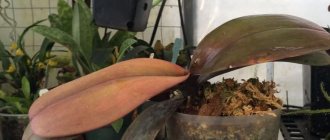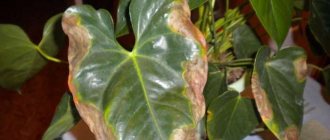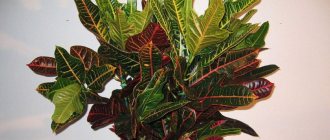The magnificent ornamental plant Schefflera is a tropical evergreen plant - exotic, cozy and homely and very popular lately. Found in the distant latitudes of Asian, African and American lands, this bright representative of the Araliaceae family with monochromatic lush green or variegated leaves, having the unusual shape of an open, holey umbrella, has firmly entered our homes, creating a warm and lovely atmosphere in them. Therefore, when the leaves of the sheflera fall off, we begin to frantically search for the causes of its disease and ways of treatment. Let's talk about this exotic plant, its requirements and conditions for successful growth.
Schefflera: care, types
Named after the German biologist Jacob Scheffler, representatives of the Araliaceae are shrubs, trees and vines, reaching various lengths in natural conditions (from 1.5 to 40 meters). All of them have characteristic compound leaves, dissected into 4-12 lobes and resembling a palm with outstretched fingers. Schefflera is also called the umbrella tree. In the wild, the plant blooms and bears fruit beautifully, but as an indoor crop it pleases the eye only with generous, magnificent greenery.
Violation of growing conditions
Schefflera belongs to the Araliaceae family. There are several varieties of this crop - shrubs, trees, vines, the height of which in natural conditions can reach up to 40 m. At home, lower specimens are grown, not exceeding 2 m.
In its natural environment, the plant blooms, and at home its main decoration is abundant, magnificent greenery in the form of large inflorescences, consisting of several leaves connected at one point and resembling umbrellas.
Starting from the age of three, the leaves of the plant located in the lower part may turn yellow and fall off. This is a completely natural process for Schefflera, especially if leaf fall begins in the fall and is not too abundant. However, if the yellowing of the leaves is widespread, you need to pay attention to the conditions under which the flower is kept.
Despite the fact that shefflera is an unpretentious flower, some mistakes in care can lead to foliage falling. At the same time, before the leaves begin to fall, the leaves change color: they turn yellow, darken, blacken or wither.
Several factors can provoke a change in leaf color and falling:
- violation of the watering schedule;
- non-compliance with temperature conditions;
- lack or excess of nutrients;
- incorrect lighting;
- unbalanced air humidity.
You can solve a problem if you know why this or that reason arose and how to deal with it.
Adaptation period
Schefflera really does not like to change his place of residence and can experience stress from changing living conditions. A newly purchased plant will need time to adapt to a new location. Therefore, you should not be surprised if changes occur to the flower: yellowing, leaves falling off. It is also not recommended to move the tree from one place to another; the flower will instantly react by shedding green mass.
Illumination
Like any tropical plant, Schefflera loves warmth and light. Lack of light negatively affects the flower, leading to yellowing and falling leaves. Therefore, placing the plant on the north side is inappropriate. The best option would be to place a flower pot on windows facing east or west.
If part of the crown on one side of the tree turns yellow, then the problem is in direct sunlight, causing a burn to the plant, from which the leaf plates can turn black and fall off.
An excess of sunlight is especially noticeable in spring, when cloudy days are replaced by bright sunny days. As a result, Scheffler leaves become covered with small, brown spots.
In such cases, it is necessary to shade the plant or place it not on the windowsill, but on a stand located close to the window opening so that the plant does not feel a lack of light and at the same time is protected from direct sunlight.
If the lighting is poor, especially in winter, when daylight hours are short, you should illuminate the flower with a phytolamp.
Watering
One of the main factors for successfully growing a crop is proper watering, which should be regular but moderate.
The soil should be slightly damp. It is not advisable to overdry the earthen ball, otherwise the foliage may fade. However, waterlogging is much more destructive for sheflera than drought, which it tolerates more resistantly. Excessive watering can lead to rotting of the root system. A harbinger of this is yellowing of the leaves and blackening of the shoots.
Sheflera should be watered only with settled water. Chlorine and fluorine contained in tap water are spread throughout the entire plant through the root system, once on the leaves, they leave a burn.
In winter, plant growth slows down, so watering should be reduced accordingly.
The regularity of watering schefflera depends on the air temperature. At a temperature of +20-28°C, moisture absorption by the root system occurs much faster, and accordingly the soil dries out quickly. At lower temperatures, plant development slows down and water is absorbed much more slowly. In such cases, watering must be done carefully so as not to over-moisten the soil and cause yellowing and falling leaves.
Air humidity
Schefflera's homeland is forests with a humid climate, so it does not tolerate dry air well. In summer, the cause of dry air is the heat outside the window, and in winter, it is due to working radiators in the room. If you ignore this point, the foliage may turn yellow and crumble.
Sprays that increase air humidity have a beneficial effect on shefflera. Such procedures are especially useful on hot days. If the air in your apartment or office is too dry, then you need to spray the flower twice a day.
To prevent white streaks from remaining on the sheets, use only soft water when spraying.
Dust deposits on the leaf plates are wiped with a damp sponge. If the temperature in the room is stable, then the intensity of spraying in winter is left the same as in summer.
Temperature
The comfortable existence of shefflera largely depends on the air temperature. The optimal temperature for a miniature tree ranges from 20-22°C. When the temperature drops significantly, the leaves of the plant turn yellow and fall off.
Low room temperature leads to rotting of the root system.
Summer heat also has a bad effect on the flower. As the temperature rises, it is necessary to water the cheflera more often and humidify the air. You should not leave the flower in a draft, so as not to provoke the shedding of foliage.
How to care for sheflera: lighting
The most important condition for proper care of the cheflera is the correct choice of place with the required illumination intensity. The plant should be placed in the brightest place in the room. A window sill facing east or west can be considered successful. The north side is not the best option for a plant with variegated foliage. The lack of light will affect the decorativeness of the pattern; it will not be pronounced enough. But on a windowsill facing south, the crop will be uncomfortable and hot. The blinding bright sun can significantly damage the plant, leaving burns on the leaves.
Schefflera (holey umbrella) loves high levels of illumination, but does not accept direct sunlight. In a room facing south, the container with the plant must be placed on a stand near the window so that there is enough light, but the sun's rays do not fall on it. A location far from the window, for example, in the back of the room, can have a bad effect on the development of the plant - in this case, the leaves of the sheflera often fall off. The reasons may also lie in poor lighting.
Lighting problems
If sheflera leaves are exposed to direct sunlight, brown spots appear on their surface. Then the leaves turn yellow and fall off. At the same time, the plant requires bright lighting even in winter. By the way, with a lack of light, the foliage does not fall off, but becomes faded and loses its former clear pattern.
Schefflera is capricious to ambient temperature. It should be between 17 and 22 degrees Celsius. When the specified temperature increases or decreases, the leaves begin to wither and, if measures are not taken in time, fall off.
Spraying and watering
The second important factor for success in growing crops is compliance with the watering regime. It is carried out regularly, but in moderation. It is necessary that the soil in the pot is constantly slightly moist. Drying out the earthen coma is undesirable, but the sheflera can withstand short-term drought, and the plant’s reaction to excess water is unpredictable. It is only known that periodic waterlogging can destroy the crop.
Spraying is very favorable for sheflera. On hot days and when the air in the apartment is dry, light “shower” procedures should be carried out twice a day. Soft water is preferable for spraying. Its use does not leave white streaks on the leaves. To avoid dust deposits on the leaves of the shefflera, you need to periodically wipe the foliage with a damp sponge or give the plant a real shower. The culture loves high humidity and responds with gratitude to placing containers with the plant on a layer of damp expanded clay.
In winter, the growth rate and metabolic processes of the shefflera slow down, and watering also decreases, especially when the temperature in the room drops. With stable thermometer readings at any time of the year, spraying in winter continues with the same intensity as in summer.
Reasons why Schefflera turns yellow and drops leaves
Schefflera (schefflera) is a favorite indoor plant, decorative and quite unpretentious. There are few problems when growing, the main one is that the cheflera turns yellow prematurely and drops its leaves. In this article we will look at the reasons causing the problem and find out how to deal with them.
Reasons - general information
So, at home, a cheflera may turn yellow and shed its leaves for the following reasons:
- air temperature is too low;
- waterlogging;
- incorrectly selected pot;
- damage to roots during transplantation;
- low lighting;
- illness;
- pest damage;
- adaptation;
- dry air;
- malnutrition;
Next, we will consider all the listed reasons in more detail, find out why they arise, and how to deal with the problem that has arisen in each specific case.
The reason is the temperature
As a result of exposure to insufficiently high air temperatures, schefflera roots often begin to rot. The condition is generally dangerous for the plant, and one of its symptoms is yellowing of the foliage and its falling off. If the rot has spread, the shoots of the flower darken.
For normal life, the plant requires a temperature of about +18-22 degrees. A lower temperature regime is permissible only for a very short time: if the cold snap is prolonged, the sheffler will not be slow to react negatively to it.
What to do
If the cause of yellowing is precisely rotting roots, you cannot hesitate, urgent measures should be taken. You will have to remove the Schefflera from the pot to inspect the root system.
Trim away all rotted areas down to the white, healthy tissue. Then you need to treat the remaining “living” roots with an antiseptic-fungicide.
After treatment, the shefflera is transplanted into fresh soil: if an old pot is used, it must first be disinfected.
You should not expose the flower to drafts: sudden gusts of cold wind can cause the sheffler to shed its leaves with a high probability.
Note that this plant also does not like excessive heat - average temperatures are optimal. If we are talking about summer, when heat is inevitable, ease the condition of the plant by spraying it more often, watering it, and moving the pot from the windowsill to the shade. In winter, keep away from radiators.
Overmoistening
If the shefflera is regularly flooded, allowing moisture to stagnate in the soil, over time the plant will react to this by dropping its leaves and turning them yellow.
If the reason is in the pot
Either a pot that is too large in volume or a container that is too small can lead to shefflera foliage dropping and turning yellow. In a large pot, roots often begin to rot due to stagnant moisture, and in a cramped pot there is little room for them to develop.
Root damage
Sometimes, careless handling during regular or unscheduled replanting damages the roots of the plant. Schefflera reacts extremely painfully to injuries to his roots. If the damage is severe, the flower not only turns yellow and sheds its leaves, but may also die.
Lack of light
Schefflera is a southern flower, and it needs abundant lighting for normal well-being. Often it is the lack of light that leads to unpleasant problems in the form of yellowing leaves and their falling.
Diseases
Sometimes foliage may turn yellow and fall off due to a disease. Most often, fungal and putrefactive pathologies lead to the problem.
What to do
The disease usually does not arise out of the blue. As a rule, it is caused by illiterate agricultural technology and non-compliance with care rules. To prevent diseases, you need to provide competent and timely care for your shefflera.
Advice: if the disease has led to rotting of the roots, treat the lower part of the plant after pruning the affected parts with preparations such as Trichodermin or Fitosporin.
Pests
Schefflera, unfortunately, is quite susceptible to damage by harmful insects. Especially often, keeping a flower in conditions of increased dry air leads to a similar problem. Insects, having settled on a plant, infect its tissues, penetrate the roots, and eat the vegetative, green part. The following insects most often infect Schefflera: scale insects, aphids, and spider mites.
Adaptation
Schefflera is a real conservative and can react extremely negatively to a change of place of residence, even to a simple rearrangement of the pot. Sometimes adaptation is delayed and leads to yellowing or even falling of the leaves.
Dry air
In a standard city apartment, dry air is a common thing. In summer it dries naturally due to the heat outside the window, in winter - due to working batteries. For shefflera, such conditions are not the most favorable: due to dry air, its leaves curl, wither and fall off, and it is also likely to be damaged by pests.
Lack of nutrition
If Schefflera does not have enough nutrients, it will react by getting rid of foliage. Thus, the flower will try to save mineral reserves.
Sheflera transplant
As the plant grows, the need for replanting arises. Like most indoor plants, sheflera requires increasing the area of the container: once a year for a young flower, and subsequently, in adulthood, once every few years.
Correct selection of soil is also extremely important: it must be water- and breathable, so that in case of waterlogging, stagnation of water does not form and negative consequences do not arise. Gardening stores offer universal soil for indoor plants, which is quite suitable for planting schefflera. The bottom of the container must be covered with a thick layer of any drainage material.
Diseases and pests
Unfortunately, the sheflera has many enemies who make her life much more difficult. These are aphids, scale insects, spider mites. A successful method of combating them is to spray the plant with a soap solution. This measure is also good for preventive purposes. If pest damage has already occurred, then spraying should be carried out daily, leaving the insects not the slightest chance of survival. If the affected area is large, this may not help. In this case, there is nothing else left to do but turn to industrial insecticides, the choice of which is quite wide in flower shops.
Sometimes shefflera sheds its leaves. What to do? The plant can get sick from improper care, and the loss of foliage will be its consequence. Or other changes will occur to the flower. For example, small pimples form on the back of the leaves. This is how dropsy appears, caused by waterlogging of the plant. The same reason can cause brown spots to appear on the leaves, which significantly spoil the appearance of the sheflera and reduce its decorative value. The situation can be corrected by reducing watering.
But the main problem that most plant owners face is the shedding of leaves. Let's try to understand the reasons for this unpleasant phenomenon.
The appearance of pests
In addition to improper care, pests can cause shefflera leaves to fall off. Their appearance can be easily noticed by certain signs. Let's take a closer look at the reasons that cause the appearance of insects and methods of combating them.
Thrips
Typical representatives of Schefflera pests are thrips. These insects have an elongated body and very small sizes (about 1 mm), so it is difficult to immediately notice them on the sheffler. Thrips feed on the sap of leaves and stems; their appearance is indicated by small brown streaks or spots on the surface of the plant.
Gradually, the spots increase in size, the leaf begins to dry out and falls off. Thrips appear on plants if the room is too hot (+28...+30 °C) and the air is very dry. For prevention, you need to regularly spray the flower with water and maintain air humidity in the room at 80%.
When the first signs of a plant being damaged by thrips appear, you need to act quickly to prevent the mass spread of pests:
- Isolate the pest-infested schefflera from other indoor plants.
- Wash the flower leaves with a concentrated aqueous solution of laundry soap.
- Spray the shefflera with an insecticide solution prepared according to the instructions on the package.
- Adjust the temperature (no more than +25 °C) and increase the humidity level in the room.
Shchitovka
This pest attacks the stem and leaves of schefflera and sucks out the nutritious juices from them. The first sign of scale insects is sticky dew on the surface of the flower. The insects themselves are located on the lower surface of the leaf; upon careful examination, small brown plaques up to 5 mm in diameter can be found there.
Insects cause the plant to wither, yellow and fall off its green mass.
Important! If the scale insects are not eliminated in a timely manner, the shefflera may lose all its leaves and die.
The reasons for the appearance of the pest on the sheffler are low air humidity and lack of lighting. For prevention, the plant should be kept in a well-lit place and the air should not be allowed to dry out.
The fight against scale insects is carried out using the following actions:
- Isolation of a diseased plant so that pests do not move to other indoor flowers.
- Treating the shefflera with an alcohol solution allows you to remove sticky dew and the pests themselves.
- Spraying with insecticide (Aktellik, Arrivo).
- Increased air humidity and bright diffused lighting in a room with a flower.
Schefflera sheds leaves: what to do?
Failure to comply with any of the listed conditions for keeping the plant may cause leaf shedding. For example, with sudden fluctuations in room temperature, unusually low or high thermometer readings. How to save the cheflera? When the foliage darkens and falls, you should pay attention to the trunk. If it is alive, then you can save the flower by transplanting it. Dry branches are cut off, the sections are treated with an antiseptic, and the plant is transplanted into a new container by transfer, without disturbing the root system.
Loss of leaves and rotting of roots is caused by excessive watering. It is especially dangerous at low temperatures. In such cases, the shefflera sheds its leaves. What to do? The plant is successfully revived by removing all the rotten roots, washing them and keeping them in the Epin solution for a couple of hours. Then the root system is treated with a fungicide and the plant is transplanted into new soil. The leaves are also sprayed with Epin solution, and the plant is packed in polyethylene for 2-3 days for disinfection. It is necessary to periodically remove the covering for ventilation. After restoring the shefflers, you need to adjust the watering, carrying it out only if the earthen clod dries out.
Insufficient air humidity can cause leaves to turn black and fall off. It can be easily eliminated. It is recommended to spray the plant several times a week and keep it as far as possible from heating devices.
Drafts have a detrimental effect on the chefler. The leaves dry out and become brittle. Indoors, you should choose a place that is not exposed to air currents and place a pot with a plant there.
The appearance of brown spots on leaves may be a consequence of insufficient soil aeration. The soil in which sheflera grows must be breathable. It is necessary to check for drainage.
Improper care or conditions
Most often, the sudden falling of flower leaves is associated with improper care or unsuitable microclimate conditions in the room. In this case, you need to carefully analyze all the external factors affecting the shefflera and find the reason for the fall of the green mass. Only after this can concrete actions be taken to eliminate the problem.
Did you know? Bioenergetics experts claim that shefflera absorbs negative energy and relieves stress.
Poor lighting or direct sunlight
For normal growth, Schefflera needs bright, diffused light. With a lack of lighting, the leaves of the flower begin to wither and turn yellow, and then fall off. In direct sunlight, the flower may develop sunburn.
If the cause of the falling is improper lighting, then you can solve the problem using the following actions:
- if possible, place the pot with the plant near the eastern or western windows - in such a place the sheffler will receive a sufficient amount of light, but will not be exposed to direct sunlight;
- in rooms with southern windows, place the flower at a short distance from the window so that direct rays of the sun do not reach it;
- in darkened rooms, as well as during short daylight hours, use artificial lighting.
Failure to comply with the watering regime
This fact is the most common reason why Schefflera leaves fall off.
As a result of improper watering, phenomena such as:
- rotting of the roots of a flower with a significant excess of moisture in the soil, especially in a cold room;
- drying out of the earthen coma and death of the root system due to lack of water.
At the initial stage, it is easy to fix this problem. To do this, it is enough to adjust the watering regime and trim those leaves of the flower that are completely dry.
Important! To prevent water from accumulating around the Schefflera roots and causing them to rot, the pot must have a layer of drainage.
But if the Schefflera root system is also damaged, then more serious actions need to be taken:
- Remove the plant from the old pot and carefully examine all its roots.
- Cut off rotten, damaged and dead roots.
- Place the Schefflera roots in a solution of fungicide or Epin for a couple of hours.
- Replant the flower in fresh soil.
- Treat the ground part of the shefflera with Epin and cover it with a bag for 2-3 days.
- Adjust the plant’s watering regime, adding water only after the top layer of soil has dried.
Sudden changes in temperature
Schefflera does not tolerate heat and cold in the room. If the falling of the leaves of a flower was preceded by its prolonged exposure to a hot or cold room, then the cause of the problem lies in the incorrect temperature conditions. Schefflera also reacts negatively to sudden temperature changes.
Actions to save the plant should begin immediately after the first signs of shedding the green mass were noticed. If you leave this problem unattended, then the trunk of the flower will begin to dry out along with the leaves. In this case, it will no longer be possible to save the sheffler.
To fix the problem, you need to do the following:
- Carefully trim off all dry leaves and branches.
- Cauterize the cut areas with powdered activated carbon.
- Dig the Schefflera out of the old pot along with a lump of earth and replant it in new soil.
- Place the flower in a warm room with a temperature of +17…+22 °C. Avoid temperature changes.
Drafts
Schefflera needs fresh air, so the room with the plant needs regular ventilation. But if the flower stands in a draft, the leaves will not fall off. Within a day after the shefflera is constantly at the intersection of air flows, the tips of its leaves will begin to dry out.
Did you know? In the wild, Schefflera can grow up to 4 m in height and reach a width of 1.5 m.
To prevent the foliage of a flower from falling, you need to do the following:
- Trim off any yellowed leaves.
- Remove the pot with shefflera from the draft.
- In the warm season, cover the flower with a thick cloth while airing.
- Move the plant to another room for ventilation if the air temperature outside is much lower than indoors.
Dry indoor air
Sometimes the cause of plant leaves falling off is too dry air in the room. If Schefflera is grown in a stuffy room with low humidity and dust collects on its leaves, they may begin to turn yellow and fall off.
To help the plant and stop its leaves from falling, you need to maintain a higher than average humidity level in the room.
This can be achieved using the following actions:
- Spray the flower leaves with water daily and periodically wipe them from dust with a damp sponge.
- Place the pot with the plant near the aquarium or on a tray with wet expanded clay.
- Use automatic humidifiers.
It will also be useful for you to know why Schefflera leaves turn black and fall off.
Excess of mineral fertilizers
For normal growth, Schefflera needs regular feeding, but excess mineral fertilizers can lead to burns to the roots of the flower. As a result, the leaves of the plant turn yellow and fall off, and if measures are not taken in time, burns to the roots can lead to the death of the shefflera.
To save a flower you need:
- Remove the plant from the pot and remove damaged parts of the roots.
- Treat the cut areas with crushed activated carbon.
- Replant the plant in new soil.
- Apply fertilizers no more than 2 times a month and only in the spring and summer.
Dense soil
If an ideal microclimate is created in the room, but Schefflera still sheds leaves, then the reason may be that the soil is too heavy.
Important! Schefflera grows well in slightly acidic, loose soil that allows air to pass through well.
To stop the fall of the flower's foliage caused by too dense soil in the pot, the plant needs to be transplanted into a looser and lighter substrate.
Suitable for shefflera:
- ready-made store-bought soil for decorative flowers and palm trees;
- a mixture of humus, peat, coarse sand, turf and leaf soil (all ingredients must be taken in equal quantities).

